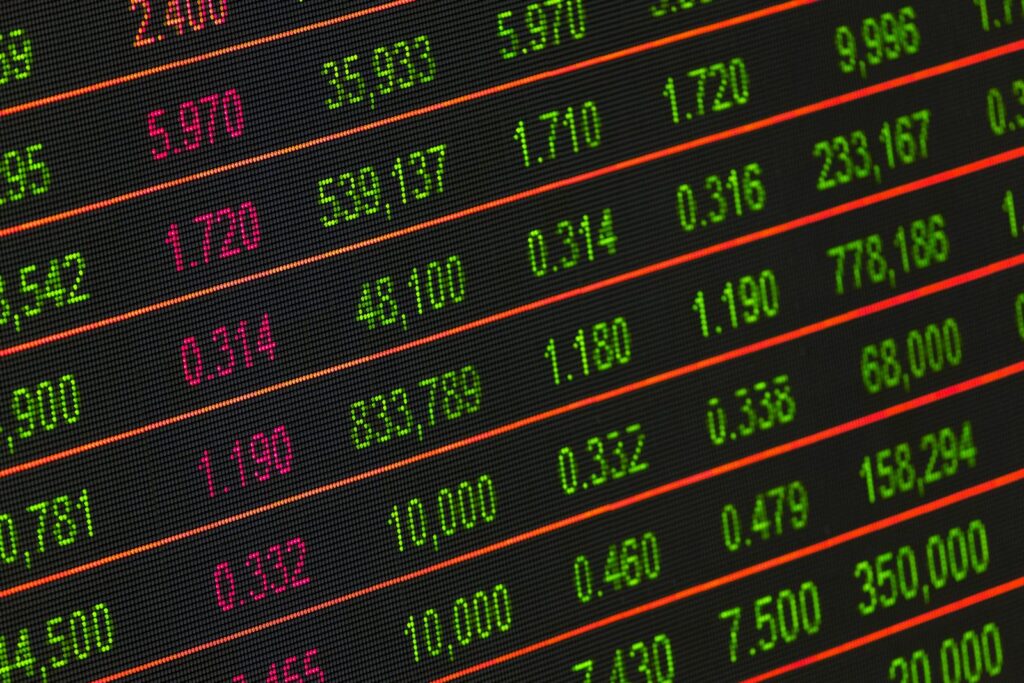Understanding the Stock Exchange: A Comprehensive Guide
The stock exchange is a cornerstone of the global financial system, playing a crucial role in the functioning of modern economies. It serves as a platform where securities, such as stocks and bonds, are bought and sold, allowing companies to raise capital and investors to buy and sell shares. This article offers an in-depth exploration of the stock exchange, its functions, and its significance, providing valuable insights for investors, businesses, and those interested in the financial markets.
1. What is a Stock Exchange?
A stock exchange is a regulated marketplace where securities—such as stocks, bonds, and other financial instruments—are traded between investors. It provides a structured environment for these transactions, ensuring transparency, liquidity, and price discovery. Stock exchanges facilitate the buying and selling of shares, enabling companies to raise funds for expansion and growth while offering investors opportunities to earn returns on their investments.
1.1 History of Stock Exchanges
The concept of a stock exchange dates back several centuries, with the first formal stock exchange established in Amsterdam in 1602 by the Dutch East India Company. This marked the beginning of a new era in finance, where shares of companies could be traded openly among investors. Over time, stock exchanges emerged in major cities around the world, including London, New York, Paris, and Tokyo, each contributing to the development of global financial markets.
1.2 Types of Stock Exchanges
There are several types of stock exchanges, each serving different functions:
- Primary Market: The primary market is where new securities are issued and sold for the first time. Companies raise capital through Initial Public Offerings (IPOs) by selling shares to the public. The primary market is crucial for businesses looking to finance their operations and expansion.
- Secondary Market: The secondary market is where previously issued securities are traded among investors. Once a company’s shares are listed on a stock exchange, they can be bought and sold in the secondary market. The secondary market provides liquidity, allowing investors to easily buy or sell their holdings.
- Over-the-Counter (OTC) Market: The OTC market is a decentralized market where securities are traded directly between parties, typically via a broker-dealer network. Unlike formal stock exchanges, OTC markets do not have a physical location. They are often used for trading smaller, less liquid stocks, bonds, and other financial instruments.
2. Functions of a Stock Exchange
The stock exchange performs several key functions that are essential for the smooth operation of financial markets and the broader economy:
2.1 Capital Formation
One of the primary functions of a stock exchange is to facilitate capital formation for companies. By issuing shares to the public through an IPO, companies can raise substantial amounts of money to fund their operations, expand their business, invest in research and development, and pursue other strategic goals. This capital formation is vital for economic growth and development.
2.2 Liquidity Provision
Liquidity refers to the ease with which an asset can be bought or sold without significantly affecting its price. Stock exchanges provide liquidity by enabling investors to buy and sell shares quickly and efficiently. This liquidity is crucial for investors, as it allows them to enter or exit positions with minimal transaction costs.
2.3 Price Discovery
Stock exchanges play a critical role in price discovery, which is the process of determining the fair value of a security based on supply and demand. Prices on a stock exchange are determined by the collective actions of buyers and sellers, reflecting the market’s view of a company’s value. This price discovery mechanism helps investors make informed decisions and allocate capital effectively.
2.4 Risk Management
Stock exchanges offer various financial instruments, such as derivatives, that allow investors to manage risk. Derivatives, including options and futures contracts, enable investors to hedge against potential losses in their investment portfolios. For example, an investor who owns a stock may purchase a put option to protect against a decline in the stock’s price.
2.5 Corporate Governance
By listing on a stock exchange, companies are subject to stringent regulatory requirements and must adhere to high standards of corporate governance. These regulations include regular financial reporting, disclosure of material information, and adherence to ethical business practices. This oversight helps protect investors and promotes transparency in the financial markets.
2.6 Economic Indicator
Stock exchanges serve as a barometer of the overall health of an economy. The performance of major stock indices, such as the S&P 500, FTSE 100, or Nikkei 225, is often viewed as an indicator of economic conditions. Rising stock prices generally signal investor confidence and economic growth, while falling prices may indicate economic challenges or uncertainty.
3. Major Stock Exchanges Around the World
Several major stock exchanges play a pivotal role in global financial markets. These exchanges are characterized by their size, the volume of transactions, and the number of listed companies.
3.1 New York Stock Exchange (NYSE)
The New York Stock Exchange, located on Wall Street in New York City, is the largest in the world by market capitalization. Founded in 1792, the NYSE is home to some of the world’s most valuable companies, including blue-chip stocks like Apple, Microsoft, and Johnson & Johnson. The NYSE is known for its strict listing requirements and high trading volumes.

3.2 NASDAQ
The NASDAQ is another major U.S. stock exchange, known for its focus on technology and innovation. It was founded in 1971 as the world’s first electronic stock market, and it has since become a hub for technology companies, including giants like Alphabet (Google), Amazon, and Facebook. The NASDAQ’s electronic trading platform allows for fast and efficient transactions.
3.3 London Stock Exchange (LSE)
The London Stock Exchange, one of the oldest stock exchanges in the world, is a leading global exchange with a strong international presence. The LSE is known for its diverse range of listed companies, including those from emerging markets. It also offers a variety of financial instruments, such as bonds and derivatives.
3.4 Tokyo Stock Exchange (TSE)
The Tokyo Stock Exchange is the largest stock exchange in Japan and one of the most significant in Asia. The TSE is home to many of Japan’s leading companies, such as Toyota, Sony, and Mitsubishi. It plays a crucial role in the Japanese economy and serves as a gateway for international investors seeking exposure to Asian markets.
3.5 Shanghai Stock Exchange (SSE)
The Shanghai Stock Exchange is one of China’s two main stock exchanges, alongside the Shenzhen Stock Exchange. Established in 1990, the SSE has rapidly grown in importance and is now one of the largest stock exchanges in the world by market capitalization. It is a key platform for trading shares of Chinese companies, particularly state-owned enterprises.
4. How Stock Exchanges Work
Understanding how stock exchanges work is essential for investors and businesses alike. The process of buying and selling securities on a stock exchange involves several key steps:
4.1 Listing of Securities
Before a company’s shares can be traded on a stock exchange, the company must go through a process called listing. This involves meeting the exchange’s listing requirements, which may include criteria related to the company’s financial health, size, and governance practices. Once listed, the company’s shares become available for trading on the exchange.
4.2 Trading Mechanisms
Stock exchanges typically use one of two trading mechanisms:
- Auction Market: In an auction market, buyers and sellers submit their bids and offers for a security, and transactions occur when there is a match between the highest bid and the lowest offer. The NYSE operates as an auction market, where designated market makers facilitate trading.
- Dealer Market: In a dealer market, such as the NASDAQ, transactions occur through a network of dealers who buy and sell securities from their inventory. Dealers quote prices at which they are willing to buy or sell, and investors trade directly with the dealers.
4.3 Order Types
Investors can place different types of orders when buying or selling securities on a stock exchange. Common order types include:
- Market Order: A market order is an instruction to buy or sell a security immediately at the best available price. Market orders are executed quickly but may result in a different price than expected due to market fluctuations.
- Limit Order: A limit order specifies the maximum price at which an investor is willing to buy or the minimum price at which they are willing to sell. Limit orders provide more control over the price but may not be executed if the market does not reach the specified price.
- Stop Order: A stop order becomes a market order once a specified price, known as the stop price, is reached. Stop orders are often used to limit losses or protect gains.
4.4 Settlement
After a trade is executed on a stock exchange, the transaction must be settled. Settlement involves the transfer of ownership of the security from the seller to the buyer and the transfer of funds from the buyer to the seller. Most stock exchanges use a T+2 settlement cycle, meaning the transaction is settled two business days after the trade date.

5. The Role of Stock Exchanges in the Economy
Stock exchanges play a vital role in the broader economy, influencing capital flows, economic growth, and financial stability:
5.1 Capital Allocation
Stock exchanges facilitate the allocation of capital to businesses that can use it most effectively. By providing a platform for companies to raise funds through the issuance of shares, stock exchanges help channel savings from investors to productive enterprises, fostering innovation and economic growth.
5.2 Wealth Creation
Investing in stocks has historically been one of the most effective ways to build wealth over the long term. Stock exchanges enable investors to participate in the growth of companies and the economy by purchasing shares and earning returns through capital appreciation and dividends.
5.3 Economic Stability
Stock exchanges contribute to economic stability by promoting transparency and ensuring that companies adhere to high standards of corporate governance. By providing accurate and timely information to investors, stock exchanges help prevent market manipulation and reduce the likelihood of financial crises.
5.4 Global Integration
Stock exchanges play a crucial role in integrating global financial markets. Through cross-border listings, foreign investments, and the trading of international securities, stock exchanges facilitate the flow of capital across borders, promoting global economic interdependence.
6. Challenges and Future Trends
While stock exchanges have evolved significantly over time, they continue to face challenges and are subject to ongoing changes:
6.1 Regulatory Changes
Stock exchanges are heavily regulated to ensure fair and transparent markets. However, regulatory changes can pose challenges for exchanges and market participants. For example, new regulations related to high-frequency trading, market access, and financial disclosures can impact the way exchanges operate.
6.2 Technological Advancements
The rise of technology has transformed stock exchanges, leading to faster and more efficient trading. However, technological advancements also bring challenges, such as the need to protect against cyber threats and ensure the integrity of trading systems.
6.3 Sustainability and ESG
Environmental, Social, and Governance (ESG) considerations are becoming increasingly important for investors and companies. Stock exchanges are responding by promoting ESG disclosure requirements and supporting sustainable finance initiatives.
6.4 Globalization
As financial markets become more interconnected, stock exchanges face the challenge of competing in a global marketplace. The rise of global trading platforms and the increasing mobility of capital mean that exchanges must continuously innovate to attract listings and investors.
Conclusion
The stock exchange is a fundamental institution in the global financial system, enabling the efficient allocation of capital, wealth creation, and economic growth. By understanding how stock exchanges work, their functions, and their impact on the economy, investors and businesses can make informed decisions and navigate the complexities of financial markets. As the world of finance continues to evolve, stock exchanges will remain at the forefront, adapting to new challenges and driving economic progress.

